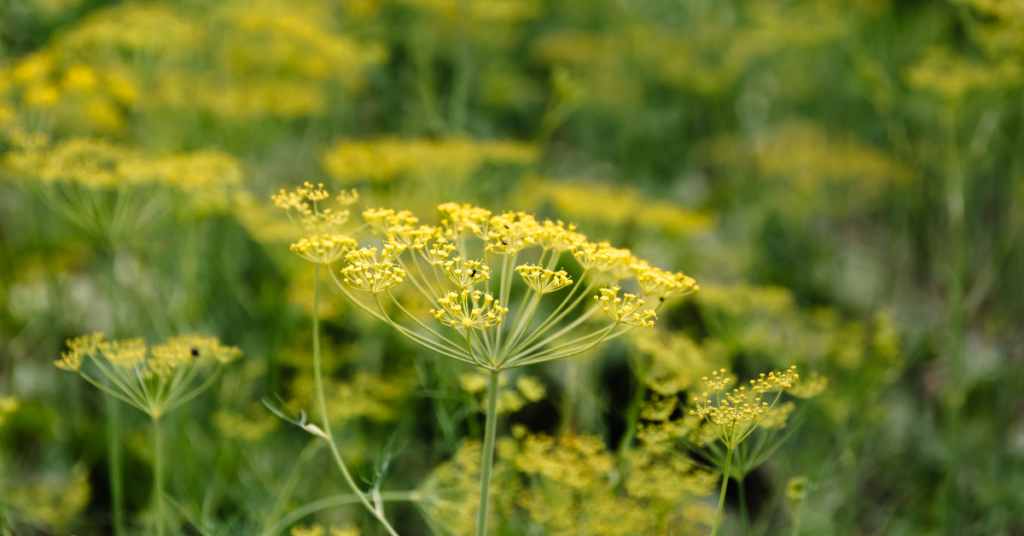Fennel – Essential Oil
Fennel (Foeniculum vulgare)
Fennel’s long history of culinary and medicinal use is attested by Greek and Roman records; the former as early as 1400 BC. Pliny (23-79 AD), the Roman author of “The Naturalis Historie”, recorded an observation that serpents ate and rubbed against fennel in order to improve their eyesight after sloughing their skins. Considered a powerful herb, Pliny listed fennel as a treatment for 22 different ailments.
During the Medieval period, fennel was considered an insect repellent and was also used, together with St John’s Wort (Hypericum), to deter witchcraft and ward off evil spirits.
Fennel seed is used extensively in Indian cookery, and it has a similar taste to aniseed.
The word fennel came indirectly into English from the Latin word for ‘hay’, which was cultivated for animal fodder.
Uses include:
Constipation
Flatulence
Inflammatory Bowel Syndrome (IBS)
Gum infections
Fluid retention
Catarrhal coughs
Menstrual problems
Menopause
Cautions
Do not use on babies or children under the age of 5 years old.
Do not use if pregnant.
Do not use if epileptic.
Constipation
Encourages peristalsis.
Directions for use
Bath: Add up to 5 drops of pure essential oil to a bath of water, and lie back and relax.
Massage: Mix 20 ml of carrier oil (sweet almond, grape seed) to 10 drops of pure essential oil and massage into abdominal area in a clockwise direction.
Flatulence
Calms nerves and has a balancing effect on the body.
Directions for use
Bath: Add up to 5 drops of pure essential oil to a bath of water, and lie back and relax.
Massage: Mix 20 ml of carrier oil (sweet almond, grape seed) to 10 drops of pure essential oil and massage into abdominal area in a clockwise direction.
Inflammatory Bowel Syndrome (IBS)
Calms nerves and has a balancing effect.
Directions for use
Bath: Add up to 5 drops of pure essential oil to a bath of water, and lie back and relax.
Massage: Mix 20 ml of carrier oil (sweet almond, grape seed) to 10 drops of pure essential oil and massage into abdominal area in a clockwise direction.
Gum infections
Look for toothpastes containing this oil or herb.
Directions for use
Mouthwash: Add 1 drop of peppermint oil to a glass of water and swill round mouth. Always spit out solution.
Fluid retention
Acts as a diuretic.
Directions for use
Bath: Add up to 5 drops of pure essential oil to a bath of water, and lie back and relax.
Massage: Mix 20 ml of carrier oil (sweet almond, grape seed) to 10 drops of pure essential oil.
Catarrhal coughs
Directions for use
Handkerchief: Put a couple of drops of pure essential oil onto a tissue or handkerchief and inhale as and when required.
Massage: Mix 20 ml of carrier oil (sweet almond, grape seed) to 10 drops of pure essential oil.
Oil burners: Sprinkle up to 5 drops of pure essential oil onto water and light the burner.
Menstrual problems
Regulates periods due to its oestrogen like structure.
Directions for use
Bath: Add up to 5 drops of pure essential oil to a bath of water, and lie back and relax.
Massage: Mix 20 ml of carrier oil (sweet almond, grape seed) to 10 drops of pure essential oil and massage into abdominal area in a clockwise direction.
Menopause
Regulates fluctuating hormone levels. It also encourages the adrenals to produce oestrogens.
Directions for use
Bath: Add up to 5 drops of pure essential oil to a bath of water, and lie back and relax.
Massage: Mix 20 ml of carrier oil (sweet almond, grape seed) to 10 drops of pure essential oil and massage into abdominal area in a clockwise direction.
Further Information
Where grown: Fennel belongs to the Umbellifera family and grows in Europe, mainly in the Mediterranean.
Parts used and method of extraction: The oil is obtained from the crushed seeds by steam distillation.
Colour and smell: Clear with a yellow tinge and with a strong distinctive odour.
Active ingredients: Anethol, fenchone, estragol, camphene, phellandrene.
Properties: Anti-flatulent, anti-spasmodic, mild laxative, bactericidal, carminative.
Mixes well with: Fennel does not mix well with other oils due to its distinctive smell.


